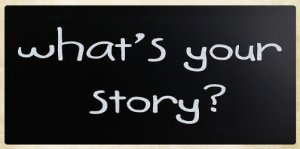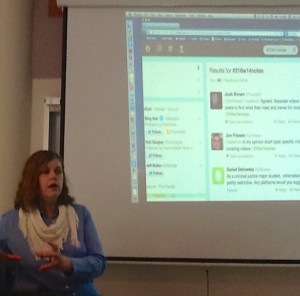Guest Blog by: Beth Scholes
Corporate storytelling is an important part of a social media strategy. Storytelling conveys the culture of the company, captures the heart of the organization, and highlights products just to name a few  benefits of this tried and true classic method.
benefits of this tried and true classic method.
In her Blog How to Use Digital Storytelling as your Social Media “Secret Sauce” author Shanna Mallon shares five key points:
Show the human side
Share your Brand’s story
Work narrative into updates
Consecutive posts can tell the broader story
Use elements of storytelling
The power of storytelling is linked to Psychology; in fact human brains are wired to organize information into story form. Screenwriting coach Robert McKee, in Storytelling That Moves People, explains two persuasive methods: rhetoric and emotion. Rhetoric is the conventional method of using facts, stats, and quotes to persuade the audience. Yawn! While rhetoric engages the brain, it leaves the heart untouched. The most powerful method of persuasion is emotion. Storytelling requires skill that weaves information, arouses emotion, and heightens energy, all of which persuade the audience to take action.
Corporate storytelling must be authentic, including the grittiness of real life struggle. For storytelling principles refer to Storytelling That Moves People; McKee discusses:
Compassion
Skepticism
Acknowledging the dark side
Authenticity
Key questions
And much more
In the comments below, please share your experience with responding to an emotional corporate story.


